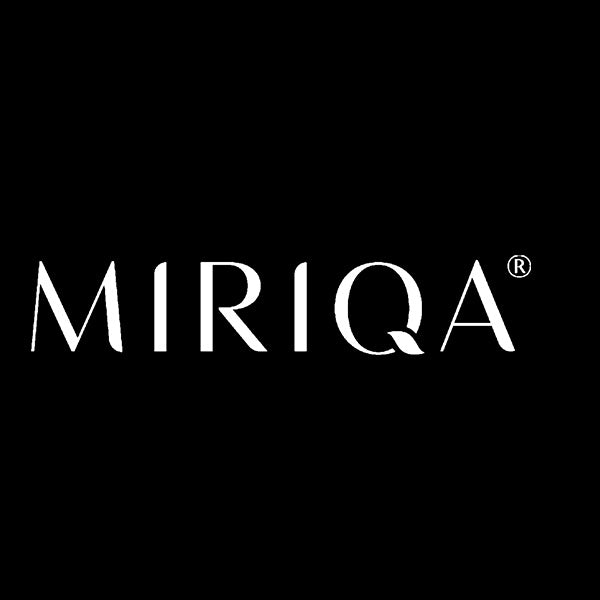Comprehensive Guide to Skin Pigmentation Treatment: Types and Solutions
Fortunately, a myriad of treatment options exist, ranging from topical solutions like hydroquinone to advanced procedures like laser therapy. Complemented by oral medications and lifestyle modifications, these approaches offer comprehensive strategies to combat pigmentation concerns. Sun protection emerges as a vital prevention strategy, underscored by the importance of sunscreen usage and lifestyle adjustments for optimal skin health
In conclusion, mastering skin pigmentation entails understanding its nuances, embracing accurate diagnosis, and leveraging a diverse array of treatments and prevention strategies. By prioritising skin health and seeking professional guidance, individuals can confidently navigate their pigmentation journey, reclaiming not just vibrant skin but also renewed confidence and self-assurance.
Common Types of Pigmentation
Pigmentation issues affect skin tone and appearance. Here's a brief look at common types of pigmentation, their causes, characteristics, and tips for caring for your skin; ensuring a radiant glow.

- Freckles: Freckles are small, flat, tan or light brown spots appearing on sun-exposed skin like the face or arms. They increase in prominence in the summer and fade in the winter, they result from sun exposure and are more common in fair-skinned individuals due to their genetic predispositions. Although with the regular use of sunscreen and protective clothing they can be managed effectively.

- Solar Lentigines (Liver spots/Sun spots): Solar lentigines are flat, brown, or black spots on sun-exposed areas such as the face or hands they are more commonly found in older adults and persist all year-round. While they are typically harmless, any changes in size, colour, or shape should be monitored as they can be indicative of skin cancer. Annual skin checks are also highly recommended. Preventative measures include sunscreen usage and protective clothings.

- Melasma (Chloasma): Melasma manifests as brown or grey-brown patches on the face, particularly the cheeks and forehead, often involving deeper skin layers. This dreaded ailment can often be triggered by hormonal changes, such as during pregnancy, the use of oral contraceptives, and hormone replacement therapy. UV radiation and stress can further exacerbate the condition. With effective management being the regular use of sunscreen, topical pigmentation treatments such as hydroquinone, and in some cases the use of chemical peels or laser therapy.

- Post-inflammatory hyperpigmentation(PIH): PIH often occurs as a result of skin injuries or inflammation, which leads to the overproduction of melanin in the affected area. This can result in dark patches or spots on the skin. Common triggers of PIH can include acne, burns, cuts, and aggressive skin treatments such as laser therapy or chemical peels, individuals with darker skin tones are also more prone to developing PIH. Prevention and treatment of this condition typically involves minimising skin trauma, using gentler skincare products as well as incorporating ingredients such as retinoids, vitamin C, and azelaic acid to lighten hyperpigmented areas.
Understanding Pigmentation Triggers
Ever wondered why your skin develops those pesky spots and patches? Pigmentation issues can be a source of frustration for many, altering our skin tone and affecting more than just appearance but also our confidence and self-image. Let us dive into the world of pigmentation to uncover the secrets behind these changes. From the sun’s powerful rays to hormonal shifts and post-acne marks, let’s explore the fascinating triggers behind dreaded pigmentation problems and how to effectively manage them.
UV-Driven Pigmentation: UV rays from the sun stimulate melanocytes, which typically produce melanin which aids in the absorption of harmful UV rays and protects your skin from sun damage, however an excess of melanin can actually lead to uneven distribution which results in the appearance of freckles and an uneven skin tone. The main culprit responsible for this would be prolonged and frequent exposure to the sun.
Hormonally Driven Pigmentation (Melasma): Typically triggered by hormonal changes, melasma is a condition characterised by brown or blue-grey spots manifesting on the skin. Often coined the “mask of pregnancy”. This condition is exacerbated by UV exposure.
Post-inflammatory Hyperpigmentation (PIH): PIH occurs mostly due to skin trauma or inflammation which leads to an overproduction of melanin. Common causes include acne, burns, cuts, and aggressive skincare treatments such as chemical peels or laser therapy. With PIH the affected area becomes darker than the surrounding skin, particularly in individuals with darker skin tones.
Solar Lentigo: Also known as liver spots or sun spots develop due to chronic UV exposure causing proliferation of melanocytes and accumulation of melanin within the skin cells. This condition manifests as flat, brown, or black spots on sun-exposed areas like the face, hands, and arms. These spots do not fade in the winter and become more common with age.
Post-inflammatory Erythema (PIE): PIE is characterised by red or pink marks left by acne after the lesions heal. Unlike PIH mentioned above which involves excess melanin, PIE results from damaged blood vessels and inflammation in the skin, making marks which can persist for months and are more visible in lighter-skinned individuals.
Understanding these triggers can help in preventing and managing various complexion issues. Skin protection, hormonal management, and gentle skincare are essential strategies for maintaining an even skin tone.
Skin Pigmentation Treatment Options
Pigmentation issues got you down? No worries–there are cutting-edge solutions to help you achieve an even, and radiant complexion. Explore the most effective treatments available, from clinical interventions to daily skincare routines.
Clinical treatments: There are a myriad of treatment options available for skin pigmentation some of which include Intense Pulsed Light (IPL) and Photodynamic Therapy (PDT). IPL was first developed in 1992 to treat leg telangiectasias, which is a condition related to the presence of venous reflux within underlying varicose veins in the leg, also known as spider veins, but now has further uses in treating various pigmentation issues such as lentigines, melasma, wrinkles and more. IPL employs flashlamps and bandpass filters to produce pulsed light of varying wavelengths, durations, and fluences. When the photons are absorbed by the skin it results in the deposition of thermal energy. Chromophores (eg, haemoglobin, water, melanin) in the skin absorb these photons and are heated causing their destruction through thermocoagulation. This is the fundamentals of IPL.
Photodynamic Therapy is another route for clinical pigmentation treatment, it is a minimally invasive therapeutic modality. PDT uses photosensitizers which, after being stimulated by light at a specific wavelength, react with the molecular oxygen to create reactive oxygen species (ROS) in the target tissue which results in cell death. PDT is often used in treating sun-damaged skin, rejuvenating skin and overall improving the appearance of skin.
Laser Treatments: When it comes to achieving an even complexion, laser treatments are a popular and effective option. Specific laser treatments like Picoway and Dolite are at the forefront of dermatological advancements, offering targeted treatments for various pigmentation issues.
PicoWay Laser: Precision and Power
PicoWay is a cutting-edge laser technology which utilises ultra-short picosecond pulses to break down pigment particles by various interactions but mainly photothermolysis which involves tissue vaporisation or melting through heating by lasers. This non-invasive treatment is particularly effective for treatment of melasma by breaking down the melanin deposits without damaging surrounding tissue, freckles and age spots as the laser's ultra-short pulses ensure effective pigment fragmentation.
Diolite Laser: Focused and Efficient
Diolite laser treatment, on the other hand, is highly effective in treating superficial pigmentation issues as it uses a continuous wave laser to target and eliminate pigmentation as the laser light is absorbed by blood vessels and melanin/pigment causing the destruction of these pesky imperfections by heating the unwanted cells while leaving the healthy ones in tact, this laser is especially beneficial for sun spots and spider veins.
Skincare Products:
Active skincare products are crucial in maintaining the results of clinical treatments and preventing new pigmentation from forming. Incorporating the right products into your daily routine can make all the difference in achieving a flawless complexion. Skincare products work at a cellular level, targeting the root causes of pigmentation and providing your skin with the nutrients and protection it needs to stay clear and evenly toned. By diligently using skincare products and incorporating it into your daily routine, you will be able to enjoy fairer, more radiant skin.
The usage of skincare includes sunscreen most importantly. The daily use of a broad-spectrum sunscreen is non-negotiable. It protects your skin from harmful UV rays, which are the primary cause of pigmentation. Applying sunscreen regularly and throughout the day shields your skin from sun damage and aids in the recurrence of pigmentation issues. Incorporate products with proven active ingredients to keep pigmentation at bay:
- Vitamin C: Brightens skin and reduces dark spots.
- Retinoids: Accelerate cell turnover and fade pigmentation.
- Niacinamide: Reduces inflammation and lightens dark spots.
- Hydroquinone: Directly lightens pigmented areas.
Incorporate these into your daily routine to enhance and prolong the benefits of clinical treatments. Investing in high-quality skincare products is an essential step in your journey to achieving and maintaining a radiant, even complexion.
Miriqa® Professional Skin Nutrition Supplement
In the pursuit of effectively managing pigmentation, MIRIQA® Professional Skin Nutrition Supplement emerges as a promising solution. Let's delve into its key ingredients and the benefits it offers in its fight against uneven skin.

Tomatoes With Colourless Carotenoids:
Tomatoes, enriched with colourless carotenoids, provide a natural shield against harmful UV rays, crucial for preventing further darkening of melasma patches. Beyond sun protection, these carotenoids stimulate skin renewal, aiding in the gradual fading of dark spots and enhancing overall skin texture. Additionally, their skin-brightening properties contribute to a more radiant complexion, helping to even out pigmentation irregularities and improving skin complexion.
Olive Extract:
Renowned for its potent antioxidant properties, due to the polyphenols present in it, it serves as a formidable defence against oxidative stress, offering unparalleled protection to skin cells. With antioxidant capabilities surpassing that of vitamin C, olive extract shields the skin from environmental aggressors, helping to mitigate inflammation and redness often associated with melasma. Its anti-inflammatory benefits contribute to a calmer, more balanced complexion, essential for managing melasma-related concerns effectively.
L-Cysteine:
L-Cysteine, a type of amino acid acts as a scavenger of free radicals, L-Cysteine combats oxidative stress at the cellular level, preventing damage that could exacerbate melasma symptoms. Moreover, its synergy with olives and white tomatoes enhances skin tone, working harmoniously to lighten pigmentation and promote a brighter, more uniform complexion. By addressing underlying oxidative stress and supporting skin rejuvenation, L-Cysteine plays a pivotal role in the comprehensive management of melasma.
By incorporating MIRIQA® Professional Skin Nutrition Supplement into your skincare routine, you can harness the potent benefits of these key ingredients, paving the way for clearer, more radiant skin.
Conclusion
Are you ready to discover the key to a flawless complexion? The journey to radiant skin begins with understanding and addressing the various types of pigmentation that can affect your natural glow. From charming freckles to persistent melasma, each pigmentation issue has its own unique story and pigmentation treatment solution. Healthy, even skin requires consistent care and commitment. Daily care with an oral supplement like Miriqa Skin goes a long way in ensuring long-term health of the skin in protecting the skin against UV radiation, and lightening pigmentation and brightening overall skin tone.
Andersen, W. K., Background:Solar lentigines are acquired pigmented lesions on sun-damaged skin that in general have both keratinocytic and melanocytic hyperplasia, MehreganA.H., RhodesA.R., ThomsonT.M., & HodgsonC. (2006, June 21). Histopathology of solar lentigines of the face: A quantitative study. Journal of the American Academy of Dermatology. https://www.sciencedirect.com/science/article/abs/pii/S0190962297802241
Brenner, M., & Hearing, V. J. (2008). The protective role of melanin against UV damage in human skin. Photochemistry and photobiology. https://www.ncbi.nlm.nih.gov/pmc/articles/PMC2671032/
Correia, J. H., Rodrigues, J. A., Pimenta, S., Dong, T., & Yang, Z. (2021, August 25). Photodynamic therapy review: Principles, photosensitizers, applications, and Future Directions. Pharmaceutics. https://www.ncbi.nlm.nih.gov/pmc/articles/PMC8470722/
Dey a, A., a, b, c, d, e, (PDT), A. therapy, Gorain, B., Moy, L. S., Steeb, T., Mordon, S., Dubey, S. K., Lubritz, R. R., Juzeniene, A., Williams, H. C., Wang, X.-L., Thakare, R., Farrell, L. N., Atzori, L., … McIntyre, W. J. (2022, August 30). An insight into photodynamic therapy towards treating major dermatological conditions. Journal of Drug Delivery Science and Technology. https://www.sciencedirect.com/science/article/abs/pii/S1773224722006621?via%3Dihub
Gade, A. (2024, March 1). Intense pulsed light (IPL) therapy. StatPearls [Internet]. https://www.ncbi.nlm.nih.gov/books/NBK580525/
Solar Lentigo. DermNet. (n.d.). https://dermnetnz.org/topics/solar-lentigo
What causes uneven skin tone & how to get rid of it: Dermalogica®. Dermalogica. (n.d.). https://www.dermalogica.com/blogs/living-skin/what-causes-uneven-skin-tone
Zhou, Y., Hamblin, M. R., & Wen, X. (2023, January 20). An update on fractional picosecond laser treatment: Histology and clinical applications. Lasers in medical science. https://www.ncbi.nlm.nih.gov/pmc/articles/PMC9852188/





